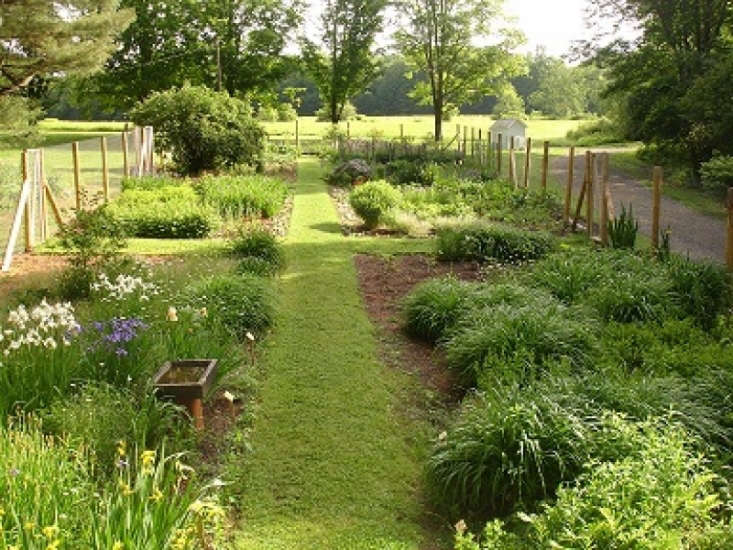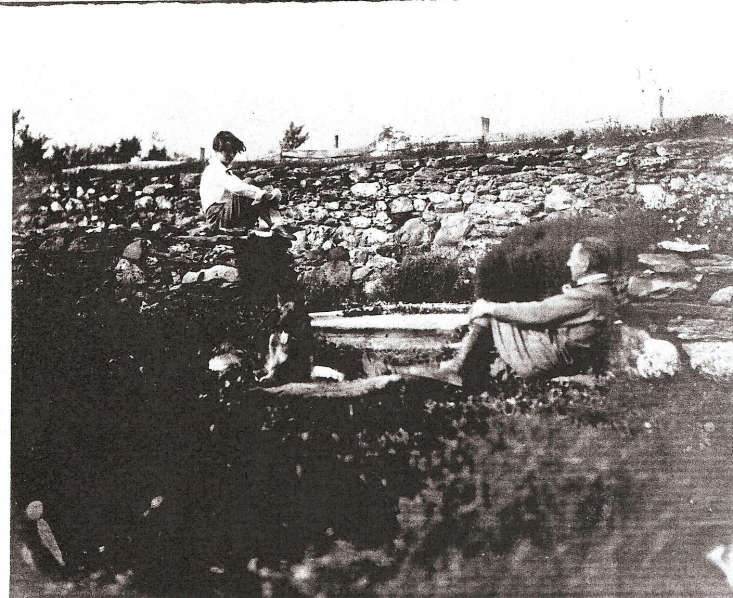It is a conversation you often hear in New York City, people saying the noise and the crowds are driving them crazy and that they need to move away. Of course most of them never seem to go, but it is interesting to note that this is not a new dilemma. As far back as the 1920s people were seeking relief from the city’s hubbub. One such person, the Pulitzer Prize-winning Jazz Age poet identified by her many fans as a symbol of Greenwich Village bohemian life, was Edna St. Vincent Millay. In 1925 she answered a New York Times ad for an abandoned blueberry farm in the foothills of the Berkshire Mountains:
Photography by Jeanne Rostaing except where noted.

Quiet doesn’t begin to describe her rural retreat, which still sits today along a narrow country road a long drive from the nearest village, the tiny town of Austerlitz, New York. When Millay and her husband, Dutch businessman Eugen Boissevain, arrived they found a neglected Victorian farmhouse, some derelict barns and 700 acres of clear cut land. Despite the many challenges the place presented, Millay described it in a letter to her mother as “one of the loveliest places in the world.”

The couple adapted the old house into a writer’s haven complete with a book-crammed library. The land around the house eventually became the site of 13 garden rooms surrounding a tiny writer’s cabin where Millay spent her afternoons in creative solitude.

Her mother, a divorcee who supported Millay and her two sisters by private duty nursing, was an herbalist and taught Millay which plants were useful as remedies for female maladies, as well as how to use an infusion of calendula flowers to keep her trademark red hair looking its best.

The Millay Society acquired the house in 1986 after the death of Millay’s younger sister, Norma, who had lived in the house since shortly after Millay’s death in 1950. Like her famous sister, Norma loved gardening; she lived into her nineties and, by the 1980s, the property had been neglected for many years. The society restored and opened the house to the public in 2010 and then turned its attention to the grounds.

Michael Minchak, former head gardener at Steepletop, led the restoration for three and a half years. To create as authentic a restoration as possible, he says he used the landscape report extensively as well as records in the Library of Congress and the meticulous notes and lists that Millay made about what she planted.

Minchak says in the process of pulling by hand invasive weeds and hacking away overgrown plants, a number of perennials were uncovered that he believes Millay may have planted and that include Asian poppies, Siberian iris, day lilies, wild bergamot, and quince. Empty spaces he filled with plants that were popular in the era and which Millay might well have grown.

He says Millay was really ahead of her time in practicing companion planting and in combining vegetables with flowers. She acquired many of her plants through mail order and from friends and family. But she was apparently not above “rescuing” plants by digging them up on abandoned neighboring farms.

Originally the area was also planted with viburnums that Millay called “snowball bushes” but those are gone, having been decimated by the viburnum beetle and shaded out by the now mature pine trees.

As a visitor to the gardens today, you walk down a slope from the kitchen garden to the area Millay and her husband used for the madcap parties they famously threw for friends.

An outdoor barroom was central to the couple’s festivities, where liquor flowed even during Prohibition. The original mahogany bar, which was purchased in Albany and came complete with bullet holes, was recently restored and sits in its original place.


Mark O’Berski, vice president of the Board of Trustees of the Millay Society, says that when the pool was built in 1931 it was provided with an ingenious gravity-driven plumbing system which brought water from a faraway stream on the other side of the road. The unique system was designed by Eugen’s nephew, Frederick Boissevain, to allow the water to flow through the pool, into two nearby fountains and eventually into the bar. O’Berski laments that it would be prohibitively expensive to rebuild that system today.

During the time Millay lived there, it was a performance and gathering space surrounded by a massive arborvitae hedge that helped to screen the celebrity writer and her friends from gawkers. When the Millay Society acquired the estate, the arborvitaes were in terrible condition, grotesquely overgrown, diseased, and in some cases dead. In order to show visitors Millay’s original concept for the area it was decided to prune the trees to the height they would have been in Millay’s time and allow the dead trunks to remain… silent witnesses to the rural high jinks of a long ago era.
Steepletop is open to visitors through November 1, 2017. A variety of guided tours of the house and gardens are available.
N.B.: Garden as muse; visit more of our favorite landscapes that inspired writers:
- The Poet and His Garden: Ian Hamilton Finlay in Scotland.
- Garden Visit: At Home with Writer Daisy Garnett in London.
- Garden Visit: At Home with Canada’s Favorite Garden Writer.












Have a Question or Comment About This Post?
Join the conversation (0)